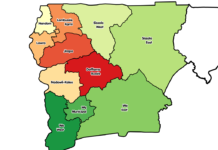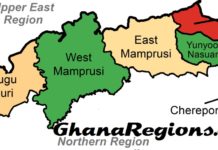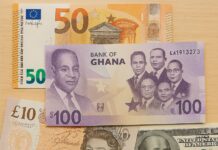
In recent months, the Ghanaian cedi has shown a surprising and welcome turnaround, appreciating steadily against the U.S. dollar in the interbank market.
After a long period of sustained depreciation that tested the resilience of the economy and the wallets of ordinary citizens, the local currency is fighting its way back—strengthening in official exchange circles and signaling renewed confidence in Ghana’s fiscal outlook.
Yet, for the average Ghanaian, this monetary shift remains largely theoretical. While the graphs and charts at the Bank of Ghana and forex bureaus speak of recovery, the story at the marketplace is unchanged: prices remain painfully high. Tomatoes prices all still carry the weight of a depreciated cedi, despite its recent gains.
This disconnect between interbank optimism and real-world experience has sparked a wave of public frustration and confusion.
Ghana Rejection of the Dollar?
Ghana rejects the Dollar and now the Cedi is rising against the Dollar but goods price are still high.
Part of the cedi’s resurgence has been attributed to the government’s firm stance on dollarization. Policy measures discouraging the use of the dollar for local transactions have begun to take root. Regulatory enforcement against illegal forex trading, along with increased scrutiny of foreign exchange flows, has helped bring a sense of order to the market. In effect, Ghana is quietly but boldly rejecting the dollar’s dominance in its domestic economy.
This de-dollarization effort is crucial. When Ghanaians prefer to trade in dollars, it undermines the strength and utility of the cedi, creating a self-reinforcing cycle of depreciation. By reversing this trend, authorities are betting on a homegrown financial discipline—one that prizes confidence in the cedi and builds resilience in the local economy.
The Lag Between Currency and Cost
But why, then, are local prices still so high?
The answer lies in the economic principle of lag. While the cedi may be gaining strength now, most prices were set when it was weaker—when importers paid higher costs, when fuel prices spiked due to forex shortages, and when transportation fees adjusted to match. These embedded costs do not automatically recede just because the currency improves.
Moreover, market psychology plays a key role. Traders and suppliers, wary of potential volatility, are slow to revise prices downward. There is often a wait-and-see attitude—businesses prefer to observe the consistency of the cedi’s performance before adjusting prices, especially in a market that has seen wild fluctuations over the past few years.
A Path Forward
For the strengthening of the cedi to truly benefit ordinary Ghanaians, a multi-pronged approach is necessary. Government agencies must not only maintain macroeconomic discipline but also foster trust among businesses. There needs to be better communication between policymakers and market actors, ensuring that currency gains are reflected in pricing structures sooner rather than later.
Furthermore, consumer advocacy and trader associations have a role to play. By fostering transparency around costs and profit margins, they can help ensure that price reductions are not just possible, but practiced.
In the end, Ghana’s rejection of the dollar and the resurgence of the cedi are important milestones—but they are only the beginning. To complete the journey, these macroeconomic wins must translate into microeconomic relief: lower prices, improved purchasing power, and a return to stability for the Ghanaian people.

















































![Morocco knock out Spain on 3-0 penalties to reach FIFA World Cup 2022 quarter-final, Morocco vs Spain (0-0) (3-0) [Video]. Morocco knock out Spain on 3-0 penalties](https://ghanaregions.com/wp-content/uploads/2022/12/Watch-Morocco-vs-Spain-0-0-and-3-0-penalties-218x150.jpg)




































